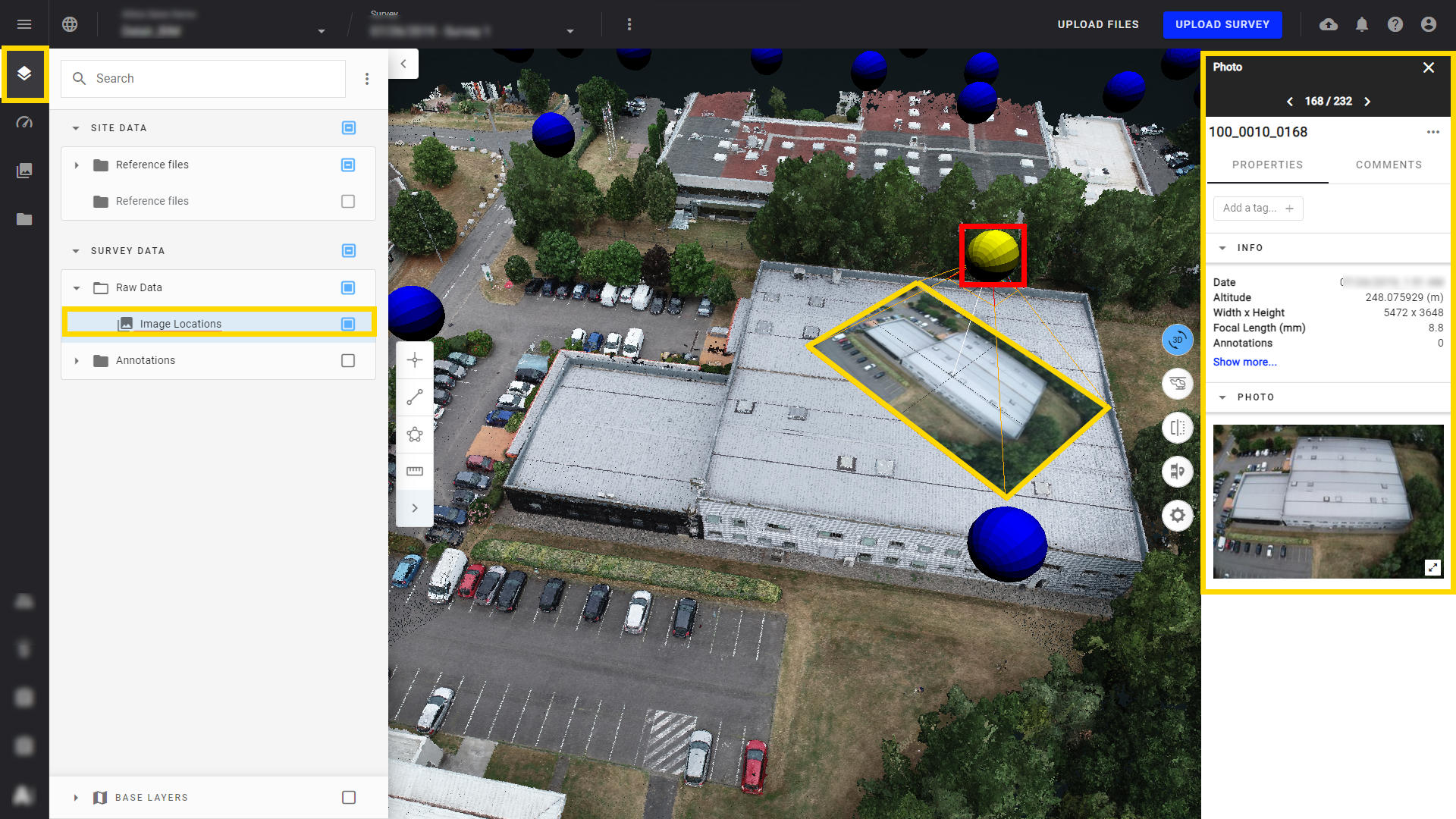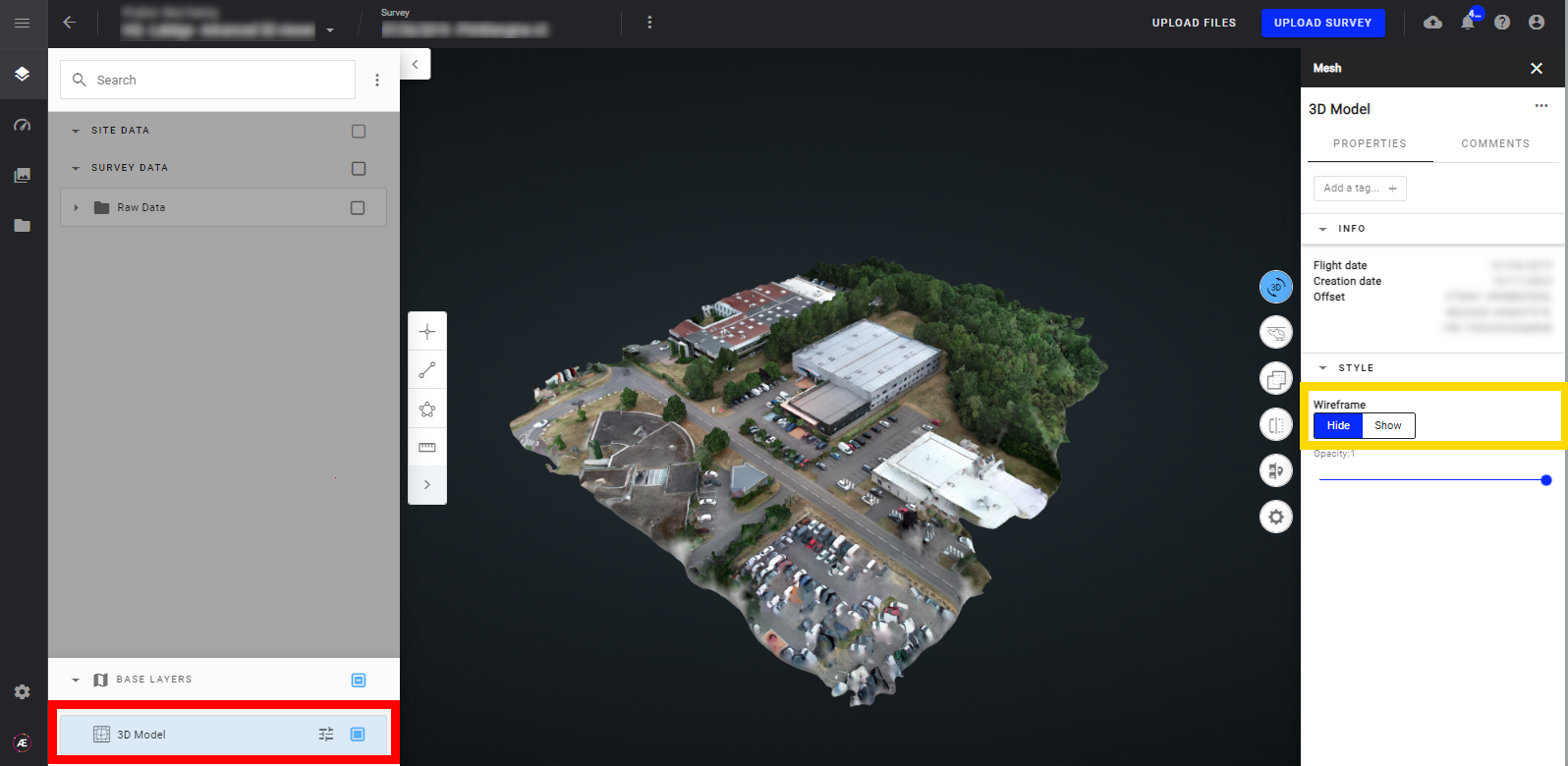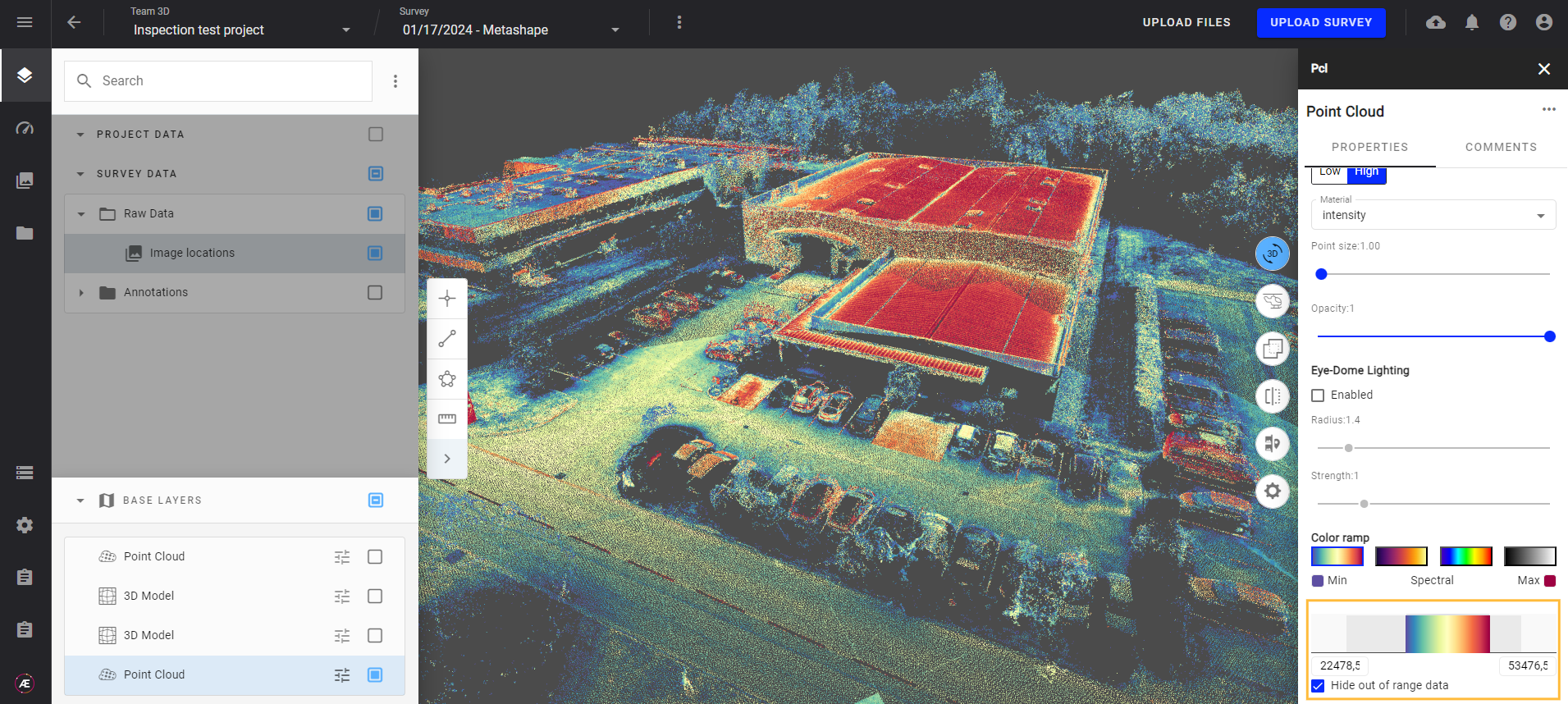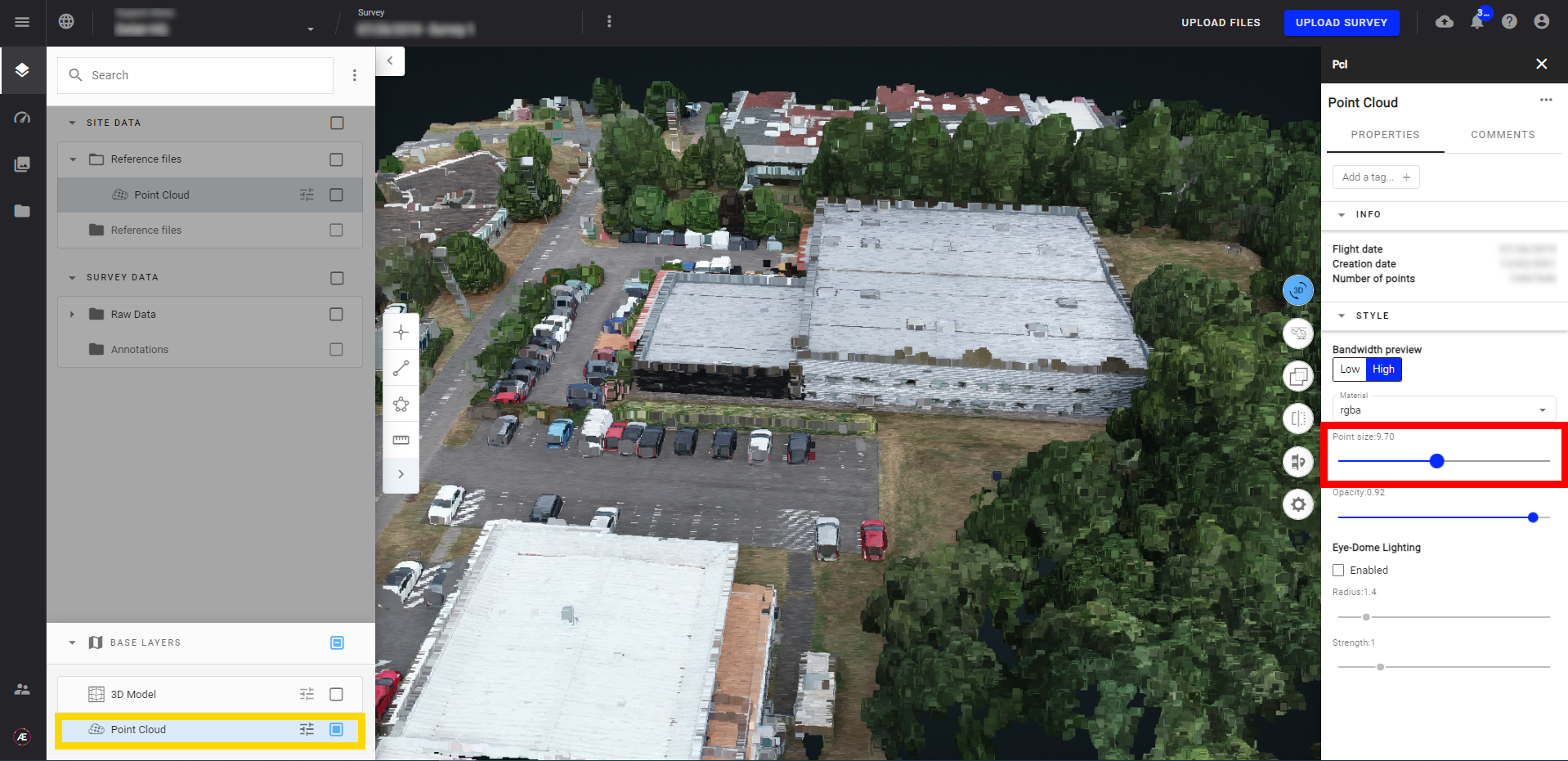Advanced 3D Viewer
1. Description
Aether's Advanced 3D viewer allows a user to visualize a large 3-dimensional (3D) Model for a given project that has been processed via the photogrammetry analytic within the platform or uploaded on the platform from external software.
This article aims to highlight the Advanced 3D viewer features and tools.
IMPORTANT NEWS
- Capability to switch easily from standard to advanced 3D viewer on existing projects
- Point Cloud is now supported
- Capability to support massive 3D Model
- Capability to support tiled 3D Model (obj format only) embedded in a zip archive.
Limitations
- Only triangulated 3D models are supported
2. Advanced 3D viewer activation
Limitations
All 3D models generated or uploaded with the Advanced 3D viewer will not be visible anymore if you go back to the Standard 3D viewer. The corresponding layers will be disabled (listed on the layer, but no checkbox to add them on map).
Two ways to activate the Advanced 3D viewer:
- At Project Creation.
- Through the “3D Viewer settings” menu, as described below.
Click on the 3 points at the left of survey name, and select “3D Viewer settings”.

Choose the desired 3D viewer and click on “SAVE CHANGES”

3. Tiled 3D Model upload
The user can import a Tiled 3D model embedded in a zip file with the format described below. The import of the Tiled 3D model is done through the classic interface of Manual File Upload.
Tiled 3D Model format
Only one Tiled 3D Model by archive in .obj format.
A zip can contain multiple .obj with their material and textures files, see the following structure as an example.

A metadata file is also supported. If available, it's used to define automatically the coordinates system and offset. The format is described below:
<?xml version="1.0" encoding="utf-8"?>
<ModelMetadata version="1">
<!--Spatial Reference System-->
<SRS>EPSG:32631</SRS>
<!--Origin in Spatial Reference System-->
<SRSOrigin>388342,4804265,0</SRSOrigin>
</ModelMetadata>
4. Switching between 2D / Advanced 3D viewer
Click on "Switch between 2D / Advanced 3D viewer" button on the map view to display the 3D project view. Click on the same button to return to the 2D view.

When switching from 2D to 3D, a loading bar appears at the bottom of the screen, indicating that 3D layers (PCL or MESH) are loading.

5. Advanced 3D Viewer tools
5.1. Split View: Gallery/3D and proximity filter
Known limitations
- The “proximity filter” is not compatible with Metashape photogrammetry outputs generated before R2410.
- For the moment, the “proximity filter” is not compatible with photogrammetry outputs generated outside the platform. It will be possible in the next release.
- By clicking on the "Split screen to view images" button, the Gallery mode is activated, splitting the screen to visualize the original images associated with the 3D data.

- Once “Split view” opened, double-click on the map activates the “proximity filter” :
- A red cross appears on 3D model, and the gallery of images is filtered to display only images that can see the clicked point. A red cross appears on images at the position of the clicked point.
- The drop down menu on top of the gallery indicates “Proximity”, with the number of filtered photos.
- To deactivate the “proximity filter” mode : select “All” in the drop down menu on top of the gallery, or close the split view.

5.2. Helicopter mode
The Helicopter mode simulates helicopter navigation over the project using the keyboard's arrows for direction and the mouse wheel to manage the speed.

5.3. Compare tools
Compare tools are available in the 3D viewer, for more information see Compare View.

5.4. Data Clipping Tool
The Data Clipping tool allows the user to manipulate a bounding box in 3 axes resulting in a data visibility filter. As the user adjusts the bounding box extent, only the data within the clipping box remains visible while data outside the clipping box is not visible. Toggling the Data Clipping tool off returns the 3D file or files back to their full visible extents.
Info
It is the first version of this tool and there are some limitations:
- You can't annotate or measure something while this tool is enabled
- You can't move the clip box center
- You can't save a clipped model
Let us know how you plan to use this tool!

5.5 3D viewer settings
Click on the "Split screen to view 3D settings" to change the background of the 3D view.

6. Layers Panel
6.1. Enabling & Disabling the 3D Layers
Select layers to be displayed from the “Base Layers” section in the bottom part of the left panel.

6.2. 3D Models
- Within the 3D view, switch between available 3D items from the "BASE LAYERS" section.

- Point Cloud

- 3D Model

6.3. Single image locations in 3D View
From the Layer Panel, selecting Image Locations will cause the image positions to be displayed as spherical markers in the 3D view. Clicking on any of these markers will open a single image in the information panel on the right side.
There are 2 types of location spheres:
- The electric blue location sphere where the photogrammetry process has been done results in the pyramid projection of the picture.

- The dark blue location sphere where there is no photogrammetry process launched results in just the picture location and preview.

7. Measure & annotation
For annotation on 3D view see Annotation Creation and Edition ;
For 3D measuring see Measurement Tool.
8. Style options
8.1. 3D model style options
With a 3D mesh model, display or hide the wireframe from the Style section of the model information panel.

8.4. Point cloud style options
On the "BASE LAYERS" menu, display the "Point Cloud" layer and click on this layer to open the menu.

8.4.1. Material
With material, change visualization type (classification, elevation, intensity… and even your material).
Example 1: Classification
- To see the classified point clouds:
- Select the point cloud layer (visible in 3D Viewer) and click on it to open the right panel info. In the right panel info, section "Bandwidth preview", choose "classification" from the menu "Material"
- Scroll down the right panel info to see the "CLASSIFICATION" section and the legend for each classified class.
- Tick/untick a class to show/hide this class from the viewer.

- Selecting any other material than classification allows the user to apply a colour ramp to the point cloud, according to the values of the selected material.



Change the opacity by moving the cursor.
8.4.3. Eye-Dome Lighting
Enable the Eye-Dome Lightning (EDL) to adjust the Radius and Strength to accentuate the shapes of objects within the Point Cloud.





